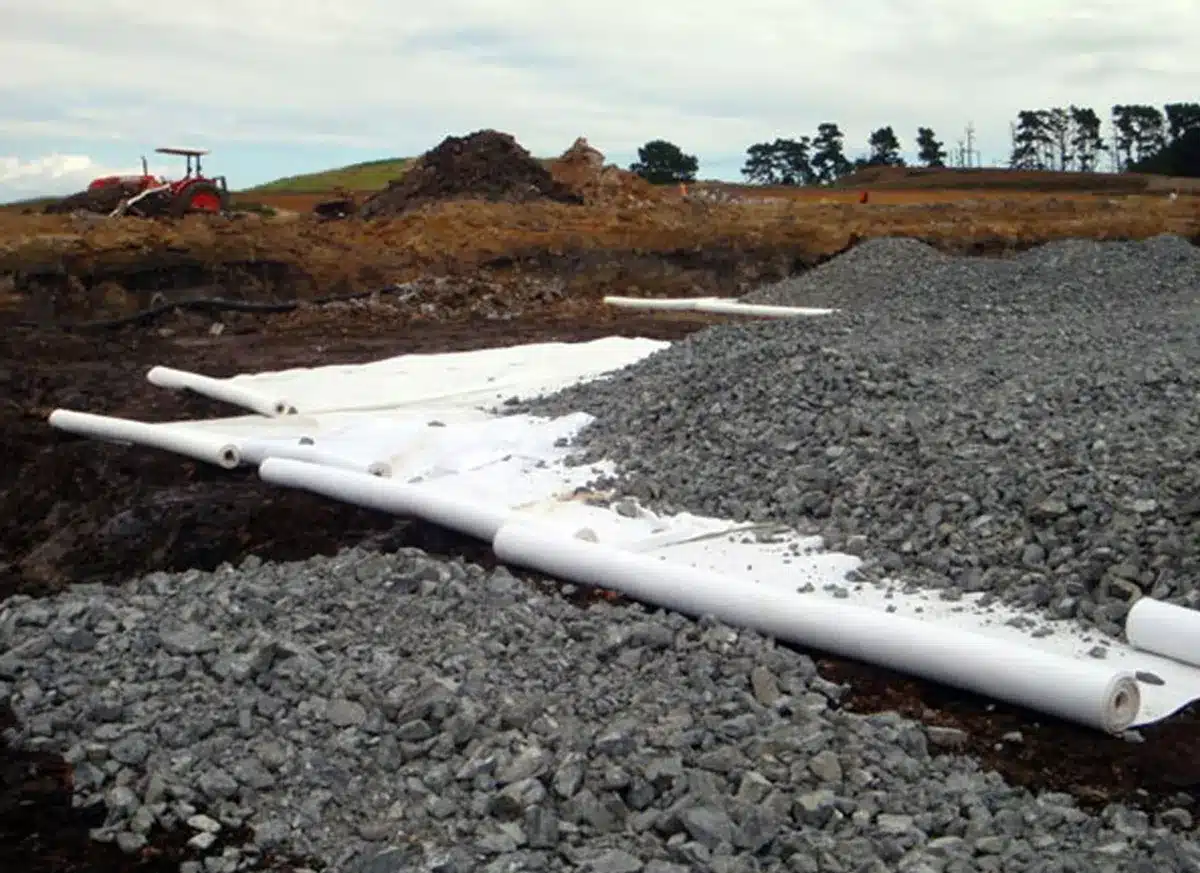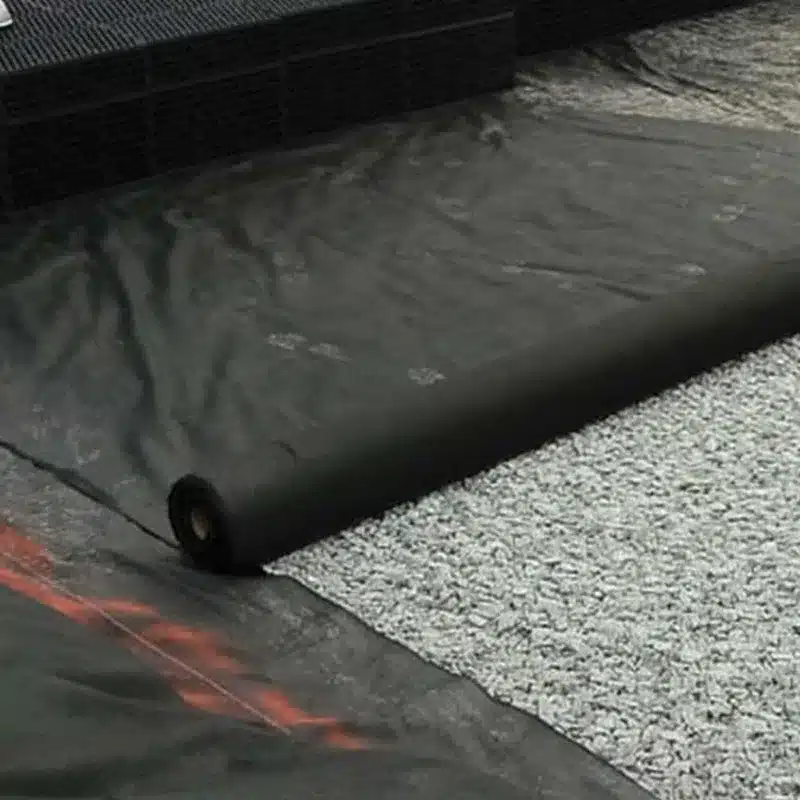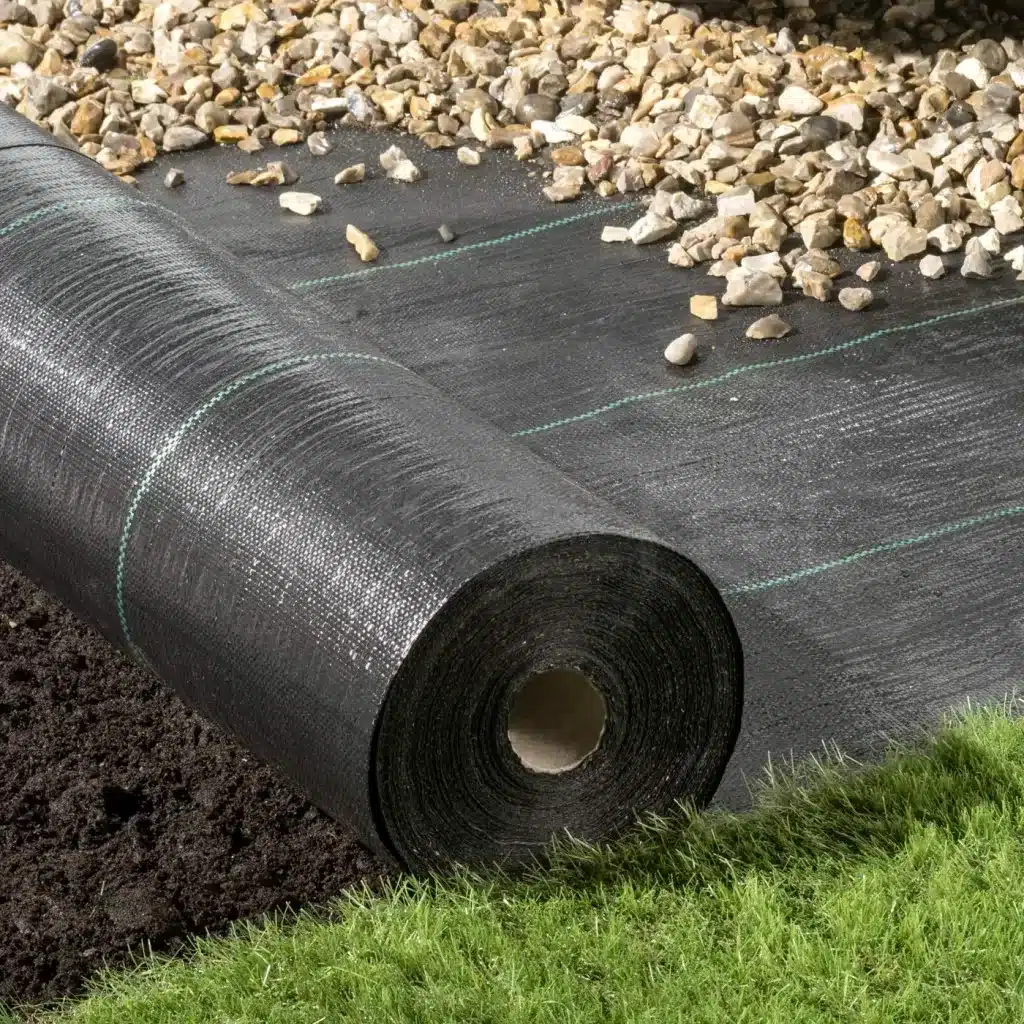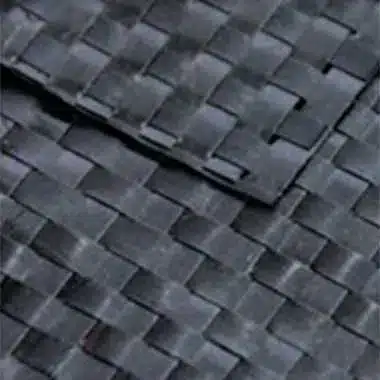+86-159 9860 6917
info@geofantex.com
geofantex@gmail.com
+86-400-8266163-44899
Woven weed fabric is a popular choice among gardeners and landscapers for controlling unwanted weeds while allowing desirable plants to thrive. This durable and permeable material is designed to block weeds from sprouting while still permitting water, air, and nutrients to reach the soil. In this article, we’ll explore the benefits of woven weed fabric, compare it to other types of weed barriers, and help you decide whether woven or nonwoven fabric is the right choice for your landscaping needs.
Which is better: woven or nonwoven weed mat?
When deciding between woven and nonwoven weed mats, it’s important to understand the distinct features of each, as well as their pros and cons in relation to your gardening needs. Here’s a detailed comparison of both:
Woven Weed Mats
Key Characteristics:
- Made from interlacing strands of material (often polypropylene or polyester).
- Usually thicker and stronger than nonwoven mats.
Advantages:
- Durability: Woven mats are highly durable and capable of withstanding the rigors of outdoor environments.
- Water Permeability: They allow water, air, and nutrients to pass through to the soil, promoting healthy plant growth.
- Weed Control: The mat’s design prevents weeds from growing through by blocking light and using the interwoven structure to stop root penetration.
- Long-Term Use: Lasts longer due to its sturdy construction.
Disadvantages:
- Installation: Woven mats can be trickier to install due to their rigidity and thickness.
- Cost: Generally more expensive than nonwoven mats.
Best Use Scenarios:
- Ideal for large, permanent garden areas, flower beds, and landscape projects where long-term durability and weed control are key.
- Great for use under gravel or mulch where a robust weed barrier is needed.
Nonwoven Weed Mats
Key Characteristics:
- Made from a fiber bonding process, often using heat or adhesives.
- Softer and more flexible compared to woven mats.
Advantages:
- Ease of Installation: Nonwoven mats are easier to install, as they are lighter and more flexible.
- Water Permeability: Like woven mats, they allow for proper water drainage and air circulation, though typically with slightly lower permeability.
- Weed Control: While not as durable as woven mats, they still offer decent weed control by preventing light penetration and blocking weed growth.
Disadvantages:
- Durability: Less durable than woven mats and more susceptible to damage from weather or wear over time.
- Shorter Lifespan: They degrade faster under UV exposure, meaning they may need to be replaced more frequently.
- Weed Penetration: The loose construction can sometimes allow small weeds or roots to break through.
Best Use Scenarios:
- Suitable for smaller, temporary garden beds or areas with less foot traffic.
- A good choice for annual flower beds, vegetable gardens, or as a short-term weed barrier in landscaping projects.
Comparative Summary:
| Feature | Woven Weed Mat | Nonwoven Weed Mat |
|---|---|---|
| Durability | High; lasts longer | Moderate; may degrade quicker |
| Water Permeability | High | Moderate |
| Ease of Installation | Harder to install due to thickness | Easier to install, flexible |
| Weed Control | Very effective, blocks most weeds | Effective, but less durable |
| Cost | Higher | More affordable |
| Best For | Large, long-term garden projects | Small or temporary gardens |
- Choose Woven Mats if you need a durable, long-lasting solution for heavy-duty applications like large garden areas or under mulch/stone pathways.
- Choose Nonwoven Mats if you’re working on a smaller, more temporary project where ease of installation and cost are more important than longevity.

What is the best material for a weed barrier?
When selecting a weed barrier for your garden, several material options are available, each with its own set of benefits and drawbacks. Below is a comparison of natural, synthetic, and biodegradable weed barriers based on effectiveness, durability, cost, and environmental impact:
Natural Materials
Mulch (Wood Chips, Straw, Bark)
- Advantages:
- Easy to apply and inexpensive.
- Improves soil quality as it breaks down.
- Provides moisture retention.
- Disadvantages:
- Needs to be replenished frequently.
- May attract pests (e.g., slugs, termites).
- Breaks down over time, requiring more maintenance.
Newspaper/Cardboard
- Advantages:
- Readily available and low-cost.
- Breaks down into organic matter that improves soil health.
- Simple to apply (just layer sheets).
- Disadvantages:
- Needs to be layered thickly and frequently replaced.
- Can be a mess if not covered well with mulch.
- May be less effective in very weed-prone areas.
Synthetic Materials
Landscape Fabric (Non-Woven, Polypropylene)
- Advantages:
- Highly durable and effective at blocking weeds.
- Allows water and air to penetrate the soil.
- Long-lasting with minimal maintenance.
- Disadvantages:
- Can be expensive compared to natural options.
- May degrade with UV exposure over time.
- Not biodegradable, leading to potential environmental impact.
Plastic Sheeting (Black, Clear, or Opaque)
- Advantages:
- Very effective at blocking light and preventing weed growth.
- Offers excellent moisture retention.
- Durable and long-lasting.
- Disadvantages:
- Does not allow water or air to penetrate the soil, potentially harming plant roots.
- Can cause overheating in hot climates.
- Difficult to dispose of at the end of its life cycle.
Biodegradable Materials
Biodegradable Weed Mat (Coconut Coir, Jute)
- Advantages:
- Environmentally friendly, breaking down over time into organic material.
- Allows air and water to pass through, promoting healthy soil.
- Reduces the need for frequent replacements.
- Disadvantages:
- May not be as durable as synthetic options, needing replacement every 1-2 years.
- Can be more expensive than plastic or newspaper.
Cornstarch-Based Mulch
- Advantages:
- Completely biodegradable, leaving no long-term impact on the environment.
- Effective at suppressing weeds while allowing soil aeration.
- Safe for use around edible plants.
- Disadvantages:
- Shorter lifespan than other materials; may require more frequent replacement.
- Can be relatively expensive.
Recommendations:
- For budget-conscious gardeners, mulch (wood chips, straw) or newspaper/cardboard is a good option, though they will require periodic replenishing.
- For long-term durability and a balance between effectiveness and environmental impact, landscape fabric is ideal.
- For those prioritizing environmental sustainability, biodegradable mats made from coconut coir or jute offer an eco-friendly alternative.
Should I use woven or nonwoven landscape fabric?
When deciding between woven and nonwoven landscape fabric, it’s essential to consider their characteristics and how they align with your landscaping goals. Here’s a detailed comparison:
Durability
- Woven Fabric: Made from tightly interwoven polypropylene or polyethylene threads, it is highly durable and resistant to tearing. It is suitable for heavy-duty applications, such as under gravel pathways or patios.
- Nonwoven Fabric: Typically made from bonded fibers, it is less durable compared to woven fabric. It is more prone to tearing under high stress but can suffice for lighter applications like flower beds.
Water Permeability
- Woven Fabric: Allows water and air to pass through more easily due to its woven structure, which is beneficial for soil health and drainage.
- Nonwoven Fabric: Less permeable; water may take longer to pass through, but it provides superior filtration in certain applications, such as under gravel in drainage systems.
Weed Control Effectiveness
- Woven Fabric: Effective at preventing weed growth due to its tight weave, but small gaps between threads may eventually allow some weeds to sprout over time.
- Nonwoven Fabric: Offers excellent weed control as it forms a solid barrier, though its effectiveness depends on proper installation and maintenance.
Cost
- Woven Fabric: Generally more expensive due to its durability and multi-purpose usability.
- Nonwoven Fabric: More affordable, making it a cost-effective option for smaller or temporary landscaping projects.
Best Use Cases
- Woven Fabric: Ideal for long-term, heavy-duty projects like under hardscaping (e.g., patios, pathways), in areas with high foot or vehicle traffic, or where superior drainage is needed.
- Nonwoven Fabric: Best for softscaping projects like flower beds, shrubbery, or drainage-focused tasks, where filtration is more important than durability.
Environmental Impact
Both woven and nonwoven fabrics are typically made from synthetic materials and may not decompose naturally. Consider biodegradable options if environmental impact is a concern.
Recommendations
- Use woven fabric for durability and water permeability in high-traffic or permanent installations.
- Use nonwoven fabric for cost-effectiveness in garden beds or drainage applications.
By assessing the specific needs of your project, you can make an informed decision that aligns with your landscaping objectives.
Is woven weed barrier better than plastic?
Yes, a woven weed barrier is generally better than plastic for many gardening and landscaping applications. Here’s why:
Permeability
- Woven Weed Barrier: Allows air and water to pass through, which benefits the soil and plants. This helps maintain soil health by preventing waterlogging and promoting root respiration.
- Plastic: Completely blocks air and water, which can lead to soil compaction, poor drainage, and suffocation of beneficial microorganisms.
Durability
- Woven Weed Barrier: Made from durable materials like polypropylene, it resists tearing and UV degradation, often lasting for years in outdoor environments.
- Plastic: While sturdy, plastic can become brittle over time due to exposure to sunlight, causing it to crack and break.
Environmental Impact
- Woven Weed Barrier: Many woven barriers are reusable and less likely to fragment into microplastics, making them more eco-friendly.
- Plastic: Can break down into microplastics, which may pollute the soil and water.
Ease of Use
- Woven Weed Barrier: Easier to cut, lay, and secure. It’s also less slippery, making it safer and easier to work with.
- Plastic: Can be harder to handle, especially when wet, and requires more effort to secure in place.
Weed Control
- Both provide effective weed suppression, but woven weed barriers have the added advantage of allowing beneficial nutrients to pass through, whereas plastic creates a more sterile environment.
Use Cases:
- Choose a woven weed barrier for garden beds, pathways, or areas where long-term soil health is a priority.
- Choose plastic for short-term projects or when creating a temporary barrier, such as under gravel or rocks where permeability is not a concern.
For most gardening needs, a woven weed barrier is the better choice due to its balance of durability, functionality, and environmental friendliness.
Woven weed fabric is an effective and durable solution for controlling weeds in gardens and landscapes. Its ability to block weeds while allowing water, air, and nutrients to reach the soil makes it a preferred choice over plastic sheeting and even nonwoven fabrics in many situations. By understanding the differences between woven and nonwoven weed barriers, and comparing them to plastic, gardeners can make informed decisions to keep their landscapes healthy and weed-free. Whether you’re looking for a long-term solution or something more temporary, woven weed fabric is a versatile and reliable option for effective weed control.



Get Free Sample
We’ll respond as soon as possible(within 12 hours)






















